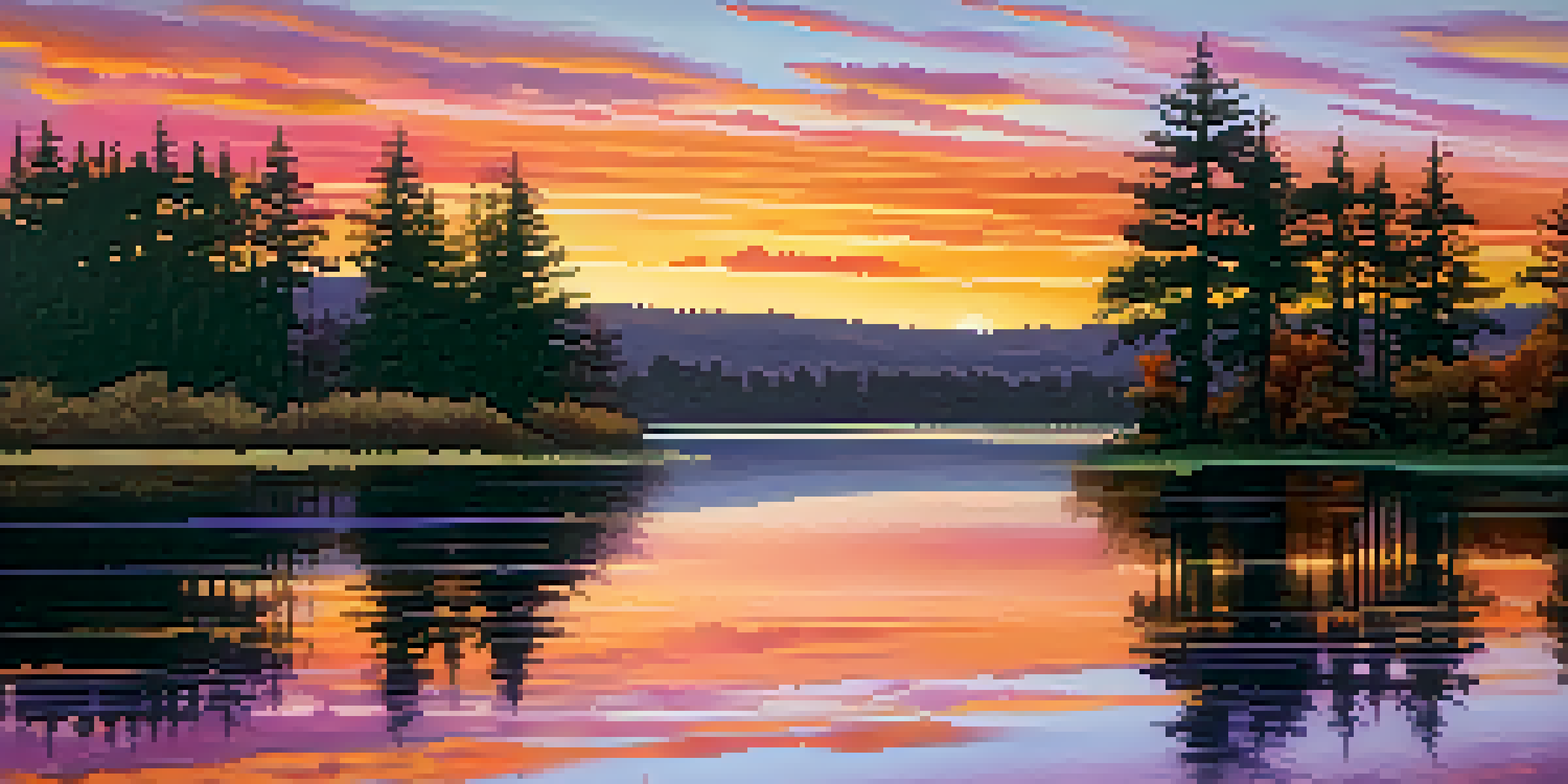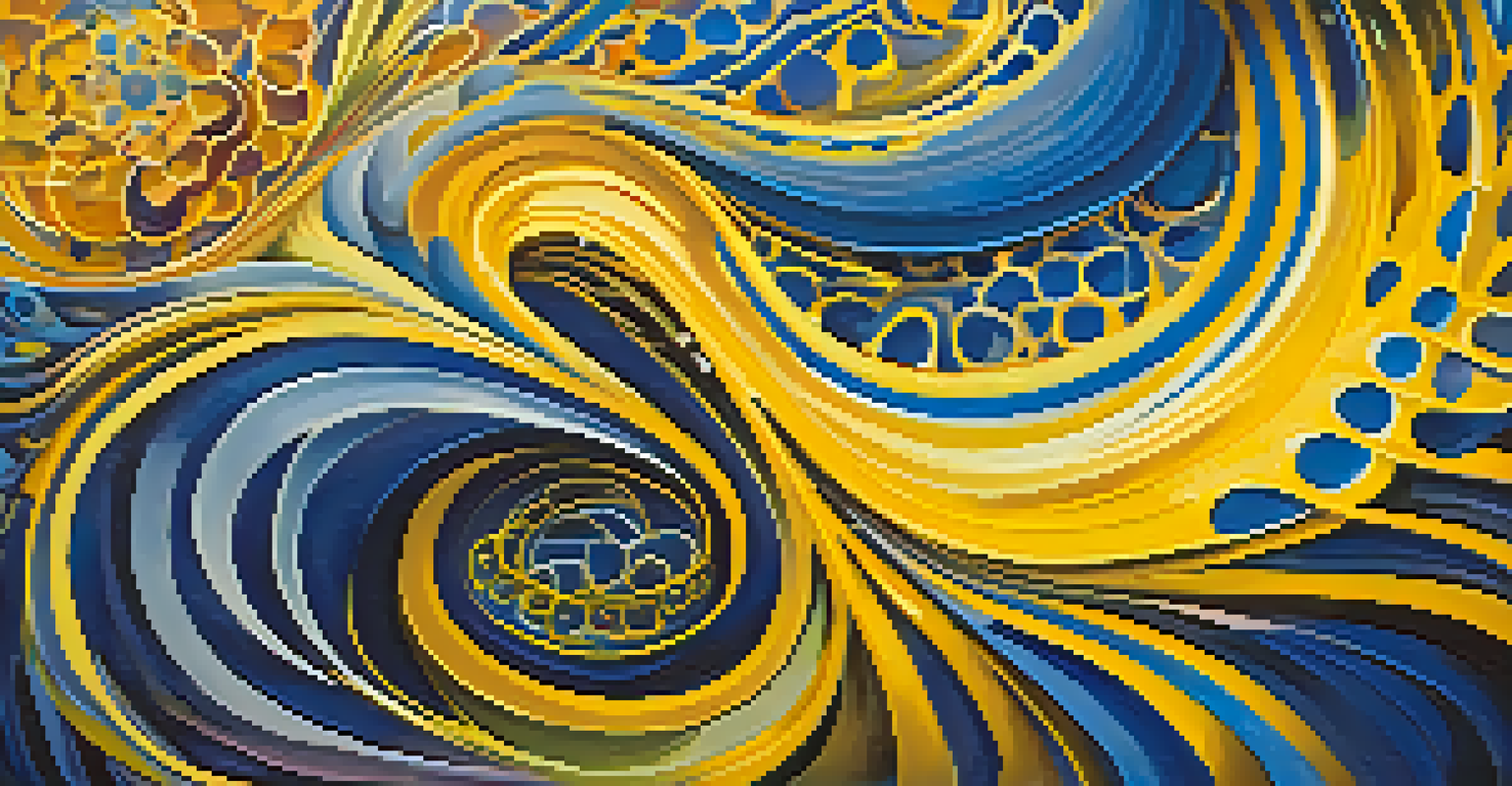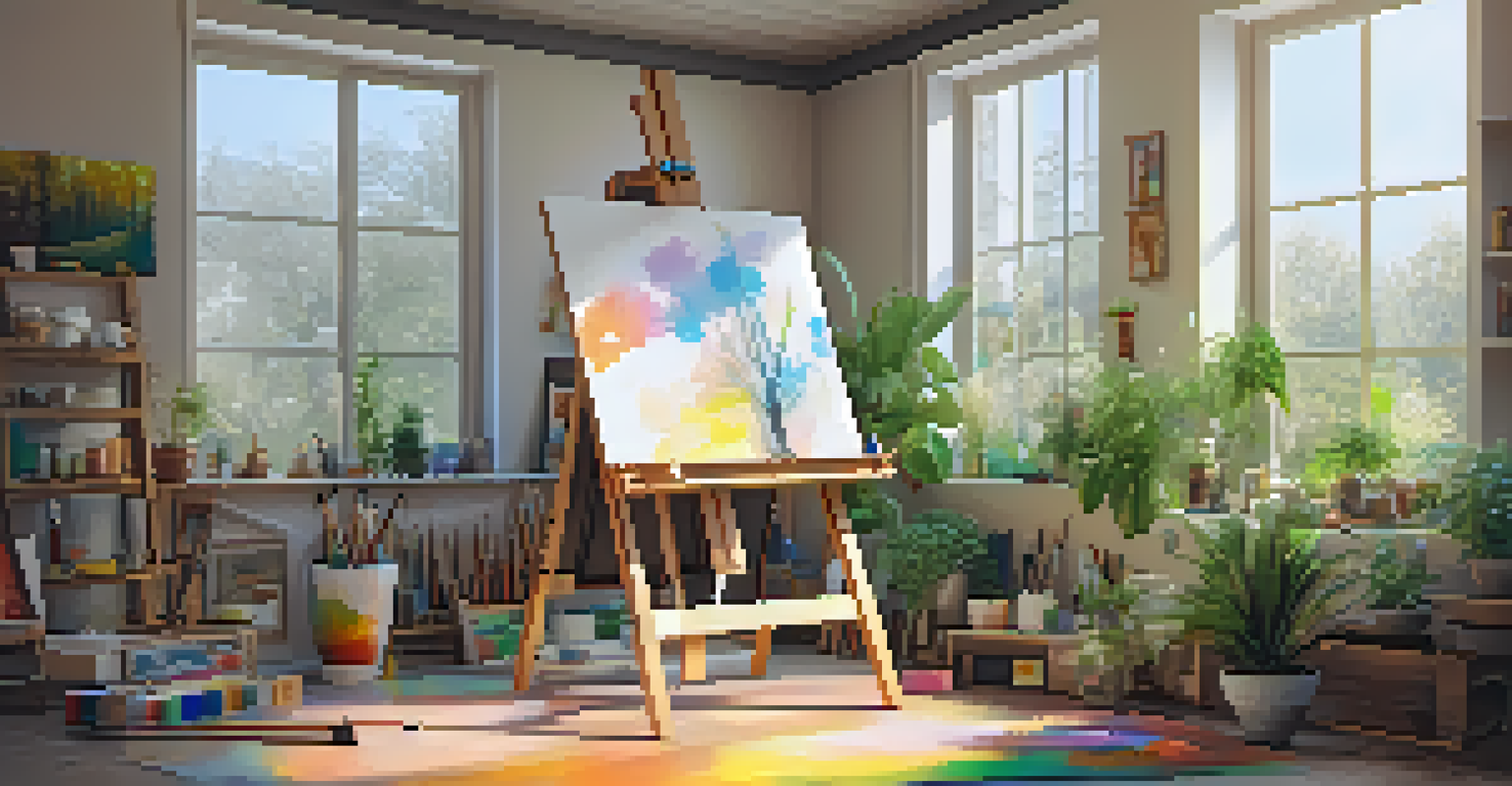The Intersection of Psychedelics, Art, and Mental Health

Understanding Psychedelics and Their Impact
Psychedelics, such as psilocybin and LSD, have long fascinated both scientists and artists. These substances can alter perception, mood, and cognition, leading to profound experiences that many describe as life-changing. While they were once stigmatized, recent studies have begun to reveal their potential therapeutic benefits, especially in treating mental health disorders like depression and anxiety.
Psychedelics are a doorway into the mind, offering insights that can transform our understanding of ourselves.
In the art world, many creatives have used psychedelics to expand their imagination and push boundaries. Artists often report that these substances enhance their ability to see the world from new angles, resulting in vibrant, thought-provoking works. This intersection of altered states and artistic expression raises important questions about the nature of creativity itself.
As society slowly moves toward a more accepting view of psychedelics, it’s crucial to explore their implications for mental health and creative expression. Understanding this relationship can not only help destigmatize these substances but also promote their responsible use in therapeutic settings.
The Therapeutic Potential of Psychedelics
Research has shown that psychedelics can lead to significant improvements in mental health conditions. For instance, clinical trials involving psilocybin have demonstrated its efficacy in reducing symptoms for individuals with treatment-resistant depression. This has sparked interest in how such substances might be integrated into traditional therapeutic practices.

One of the most compelling aspects of psychedelics is their ability to facilitate introspection and emotional release. Many users report experiencing deep emotional breakthroughs during their journeys, which can lead to lasting changes in perspective. This transformative potential makes them a valuable tool in psychotherapy, allowing patients to confront and process trauma.
Psychedelics Aid Mental Health
Recent research highlights the therapeutic potential of psychedelics in treating mental health disorders, such as depression and anxiety.
However, it’s essential to approach these substances with caution and respect. Proper guidance and a supportive environment can make a significant difference in the therapeutic outcomes of psychedelic experiences. As research continues, we must prioritize safety and ethical considerations in their application.
Art as a Reflection of Psychedelic Experiences
Throughout history, artists have often turned to psychedelics to fuel their creativity. The vivid imagery and surreal landscapes found in works from the psychedelic art movement of the 1960s serve as prime examples. These creations not only reflect the artists' experiences but also invite viewers to explore their own perceptions.
Art is the most beautiful of all lies; it is the cry of the soul in a language that transcends words.
Take, for instance, the colorful poster art of that era, which often featured swirling patterns and dreamlike figures. Such art transcends traditional boundaries, encouraging viewers to engage with it on a deeper, more emotional level. The connection between psychedelics and art is not merely coincidental; it’s a testament to the profound impact these substances can have on the creative process.
Today, contemporary artists continue to draw inspiration from psychedelic experiences, blending modern techniques with traditional themes. This ongoing dialogue between psychedelics and art highlights the potential for exploration and expression in both personal and communal spaces.
The Role of Art in Psychedelic Therapy
Art therapy has emerged as a powerful complement to psychedelic treatment, allowing individuals to express emotions that may be difficult to verbalize. By engaging in creative activities, patients can explore their feelings and experiences in a non-threatening way. This can lead to deeper insights during their therapeutic journeys.
In sessions where psychedelics are used, art can serve as a tangible representation of the inner experiences that may arise. Whether through drawing, painting, or other mediums, these creations can facilitate discussions about personal narratives and emotional challenges. This process can enhance therapeutic outcomes and foster a greater understanding of oneself.
Art Reflects Psychedelic Journeys
Artists have historically used psychedelics to inspire creativity, resulting in works that invite viewers to engage with their perceptions.
Moreover, incorporating art into psychedelic therapy can help normalize the experience, making it less intimidating for participants. It creates a safe space for exploration, allowing individuals to connect their emotional and artistic expressions, ultimately promoting healing.
Cultural Perspectives on Psychedelics and Art
Different cultures have long recognized the relationship between psychedelics and creativity. Indigenous communities, for example, have used entheogens—substances that induce spiritual experiences—in their rituals and art for centuries. This underscores a deep understanding of the interconnectedness of spiritual, mental, and creative health.
In contrast, Western societies have only recently begun to explore and embrace these connections. As the stigma surrounding psychedelics diminishes, there’s a growing interest in how they can be utilized in various cultural contexts. This shift encourages a dialogue about the importance of cultural preservation and respect for traditional practices.
By learning from diverse cultural perspectives, we can enrich our understanding of psychedelics and art. This broader view fosters a more inclusive approach to mental health treatment and creative exploration, ultimately benefiting individuals and communities alike.
Challenges and Misconceptions in the Psychedelic Space
Despite the growing body of research supporting psychedelics' benefits, misconceptions persist. Many people still associate these substances with the counterculture movement of the 1960s, leading to a stigma that can hinder progress in both art and therapy. It’s essential to challenge these outdated narratives with factual information and personal stories.
Furthermore, the potential for misuse exists, particularly in unregulated environments. Without proper guidance, individuals may experience adverse effects or fail to gain meaningful insights from their journeys. This highlights the importance of responsible use and the need for professional support in therapeutic contexts.
Cultural Views on Psychedelics
Different cultures recognize the relationship between psychedelics and creativity, fostering a deeper understanding of their therapeutic and artistic value.
Ultimately, addressing these challenges requires open conversations and education. By sharing knowledge and fostering understanding, we can create a more informed community that values the positive potential of psychedelics in both art and mental health.
The Future of Psychedelics, Art, and Mental Health
As research into psychedelics continues to evolve, the future looks promising for their integration into mental health treatment and artistic expression. With increased funding and interest, we can expect more clinical studies that validate their therapeutic potential. This will likely lead to broader acceptance and potential policy changes regarding their use.
Simultaneously, the art world is poised to embrace this shift, with more artists exploring psychedelic themes and experiences in their work. This evolution may inspire new movements and collaborations that blend healing practices with creative expression. As artists and therapists come together, they can create innovative approaches that enhance well-being.

Ultimately, the intersection of psychedelics, art, and mental health presents an exciting frontier. By fostering collaboration and understanding, we can unlock new pathways for healing and creativity, benefiting individuals and society as a whole.